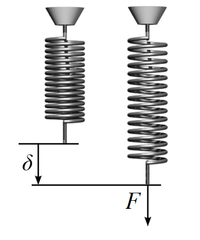
Photo from wikipedia
We investigated the effects of antihypertensive treatment on vascular function, longitudinal and torsional deformation in hypertensives. In 200 untreated patients with arterial hypertension (age 52.5±11.6 years, 56% females), we measured… Click to show full abstract
We investigated the effects of antihypertensive treatment on vascular function, longitudinal and torsional deformation in hypertensives. In 200 untreated patients with arterial hypertension (age 52.5±11.6 years, 56% females), we measured at baseline and after a 3-year of antihypertensive treatment (160 received ACEi± diuretics and 40 CCBs± diuretics): a) 24h ambulatory blood pressure b) Carotid-femoral pulse wave velocity (PWV) b) Coronary flow reserve (CFR), LV mass index (LVMI), the global longitudinal strain (GLS) and diastolic (LongSRSE) strain rate, peak twisting (Tw-deg) and untwisting at mitral valve opening (UtwMVO), at peak E (UtwE) and at the end of the E wave (UtwendE) of the mitral inflow as well as twisting (TwVel-deg/sec) velocity using speckle tracking imaging. We calculated the % change of LV untwisting as difference between peakTw and UtwMVO, UtwpeakE and UtwendE. Compared to baseline, there was an improvement of GLS (−19.9±3.4 vs. −18.7±3.1%), LongSRS (−1.08±0.22 vs. −0.98±0.26 1/s), LongSRE (1.09±0.36 vs. 0.99±0.31 1/s), peak Tw (16.2±5.1 vs. 18.7±5.9 deg), Tw velocity, and the %LV untwisting (31.04±19.28 vs 26.02±15.69% at MVO, 60.04±19.78 vs 53.96±19.76% at peakE and 79.98±14.24 vs 75.90±17.01% at endE) post-treatment. In parallel, CFR (2.72±0.61 vs. 2.55±0.64), PWV (10.34±1.93 vs. 11.2±2.08 m/s) and LVMI were improved (p<0.01 for all comparisons). By ANOVA, the interaction term between changes of all the above parameters and antihypertensive treatment (ACE inhibitors vs calcium channel blockers) was not significant (p>0.05). By multivariate analysis, the reduction of 24h meanBP and PWV independently determined the respective improvement of GLS (b=0.478 and b=0.248 respectively), LongS (b=0.428 and b=0.201 respectively) as well as Twisting (b=0.449 and b=0.294 respectively) after adjusting for changes in LV mass, CFR and atherosclerotic risk factors (p<0.05). Long-term optimal blood pressure control with ACE inhibitors and CCBs improves LV longitudinal and torsional mechanics in hypertensives in parallel with arterial stiffness and blood pressure. This improvement in LV deformation and twisting was independently related to changes in arterial blood pressure and arterial stiffness. Type of funding source: None
Journal Title: European Heart Journal
Year Published: 2020
Link to full text (if available)
Share on Social Media: Sign Up to like & get
recommendations!